If you think about it, the egg is actually quite marvelous. It’s so simple and so cool! This little oval shape houses the transformation of nutrients into a living, breathing thing! Our ancestors were fascinated by this and as time went on we obviously attempted to learn all we can about this odd mechanism of life.
We learned that the egg white provides both physical and chemical protection, as well as water and protein for development for the growing embryo. Egg white is called albumen. It is applied over the yolk in four layers that alternate in thick and thin consistencies. The first thick layer of albumen protein is twisted to form the chalazae. The chalazae consists of two dense, slightly elastic cords that anchor the yolk to the shell. They allow it to rotate while still remain suspended in the middle of the egg. This is a cushioning system for the embryo. The yolk makes up just over a third of the egg’s weight. It contains fats, proteins, vitamins, and minerals. The yolk’s yellow color comes from plant pigments called xanthophyll the hen ingests from feed. The yolk is made up of concentric spheres–like a Russian nesting doll! This is also where cholesterol is located… In fact, the egg is the richest source of cholesterol among our common foods.
Some may think this is bad considering too much cholesterol in our blood could contribute to heart disease by clogging up our arteries and thus blocking the passage of blood vessels to–or from–our heart. Our livers produce all the cholesterol we will need, so it is no surprise that for years medical associations have been urging us to limit our intake of egg yolks. However, recent studies suggest that dietary cholesterol (cholesterol ingested from food) has a relatively small effect in raising blood cholesterol levels. In fact, blood cholesterol is more heavily influenced by saturated fats than cholesterol itself. Furthermore, the total body levels are heavily influenced by genetics, gender and age. So eat that egg with no fear!
The reason we looked into the inner-workings of the egg is because we, as a human race, like to try and put anything in our bodies that could potentially be of use to us, no matter how absurd it may seem.
Naturally, we industrialized the chicken and of course, as we had hoped, benefits ensued. We slowly developed an efficient way to optimize the amount of eggs a hen produces on a given feed diet. We have also improved egg quality, an even better plus!
The invention of the refrigerator was a huge life-saver (literally). With refrigeration, egg quality deteriorates to a significantly lesser extent. Salmonella bacteria also multiply to a much slower when cold. This bacteria does seem to be a major drawback to the industrialization of the egg. With mass production, comes mass contamination.
Hens that no longer lay eggs are often recycled into feed for the next generation of egg-layers, and this tends to spread the infection of salmonella. Now salmonella is a major fear for consumers. There was an outbreak in 1985 in Europe, Scandinavia, Great Britain, and North America. In the 1990s, it was estimated by U.S. health services the one out of 10,000 eggs contained active salmonella. Today, that number has been reduced to one in 20,000.
Although the risk is half of what it used to be over 2o years ago, the risk of salmonella infection still stands. This causes much distress in consumers, who then lash out at producers for providing potentially harmful food to their communities, and then a whole uproar begins on every link in the egg production network.
Producers began refrigerating eggs as they were being transported to reduce the salmonella growth. However, this was still not enough to gain the trust of consumers, so a warning label was put on the egg cartons along with proper directions for cooking and storage. Now the responsibility is on the consumers.
We began class with a video chat with Becky Goldberg, a lawyer who works for the FDA. She was able to give the point of view of the government and where it stands and where it dabbles in the salmonella issue. Often times, as consumers, we can only see things from our perspective and next to nothing about what farmers have to go through to get the product to producers to be processed and then transported to stores. We really don’t know how complicated the whole system is.
As a class, we couldn’t see why salmonella risk could end with the farmers. Why can’t they keep the hens from carrying salmonella? Salmonella comes into hen houses on rodents. So if farmers kept the hen houses clean, the problem would be solved. Nope. That is nearly impossible task to do.
Ok, so why can’t farmers test hens for salmonella? Do you know how labor intensive that is? What about antibiotics? But now we are getting into the conventional versus organic issue that consumers also have.
The issue is, farmers have exhausted all the possible solutions. So now we ask the dreaded question: should there be a level of government involvement? This costs money, however it is the government’s job to take care of its citizens.
In 2009, the FDA imposed a law on the requirements on egg farms. This law stated that there would be testing at certain time periods. First, the environment is tested for salmonella. If this comes back positive, then the eggs must be tested. This involves taking a sample of 1,000 eggs to see if salmonella is active in them. This is also a very labor-intensive task, not to mention quite expensive.
Many people get mad about the government for not stepping in sooner to solve a problem, but many people also don’t understand the mechanics of how the government runs. When the government does decide to get involved, people still are not satisfied because the process seems to take forever. Well, this is because the government has a protocol to follow as well and a good portion of it involves consumers’ opinions.
After many years working through this tedious protocol, the FDA enforced a law that egg farms with 3,000 or more hens had to follow specific criteria to minimize the risk of salmonella contamination.
When attempting to take food-related issues to court, there is never just one side to the story, and there is never a perfect solution. As consumers, we need to be patient and trust that our government does its job at governing our food politics.
After our very informative and eye-opening video chat with Ms. Goldberg, we decided to dive into the science of eggs. Finally!
We conducted an experiment, or should I say eggsperiment, involving eggs cooked in a sous-vide, ranging from 57.2 degrees Celsius to 82 degrees Celsius. These ranges were equally proportioned out and we looked at the structure of an egg cooked to each temperature. We even got to eat them too!
The first temperature the eggs were cooked at was 57.2 degrees Celsius. These were quite the opposite from the hard-boiled eggs we were all expecting. The egg whites were not white at all, but quite clear. There was a yellow tint in them most likely from the yolk. The two distinct layers of whites were extremely noticeable, and the yolk was intact.

To be honest, I don’t think anyone was brave enough to eat this one.
The second temperature was 62 degrees Celsius. These eggs were a bit more intact than the first batch. The yolk was covered in a layer of egg whites, and the rest sort of just fell out of the shell onto the plate, clumped into a pool of water.
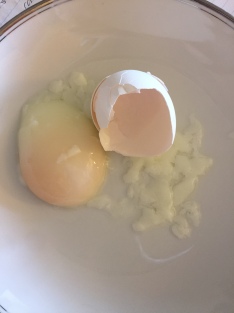
Doesn’t that look delicious?!
The third temperature was 65 degrees Celsius. These eggs looked pretty similar to those cooked at 62 degrees, not surprising given the three degree difference. Now we can start to see how the proteins in the eggs are denatured due to the high temperatures endured in the sous-veed. Once denatured, the proteins start to coagulate and form a solid-like structure.

Notice how it is slightly less watery and appears to have a firmer structure.
The fourth temperature was 68 degrees Celsius. Here the eggs looked almost hard-boiled. Because of this misinterpretation, I thought the eggs would feel hard-boiled when eaten as well. They did not. Soft-boiled eggs are an acquired taste (or probably texture) that I do not have. What was really cool about this temperature was that we discovered the yolk could be molded and shaped. This is because more proteins are coagulating, thus a stronger structure is forming.

We made the round yolk into a cube!

How do you like your eggs? 68 degrees Celsius.
At 72 degrees Celsius molding the yolk was even easier. We opened it and were exposed to its rough, grainy texture. Naturally, we had to chew it! It was a weird sensation. This was the temperature we were first introduced to the smelliness of eggs. Now the hydrogen sulfide was in the egg whites, informing the class of its presence.

Who knew egg yolks could pass for such impressive cubes?
At 74 degrees Celsius we finally started to get somewhere. Now the yolk was much firmer, and not nearly as moldable. This time it was susceptible to cracking. Professor Miller found this yolk to be particularly entertaining and found it to be weirdly chewy. In the mouth it spreads apart under the pressure of the teeth, but once the jaw opens back up, the yolk reformed into its original shape! In a way it was acting like gum. But with vigorous chewing, the yolk was eaten.

See how it is much more dry than the one before?
We experienced some difficulty getting the shell off of the 78 degree Celsius egg, similar to how the shells are difficult to remove on hard-boiled eggs…

THE FIRST ONE TO NOT SCARE ANYONE AWAY
82 degrees Celsius was our last temperature for this experiment. Similar to at 78 degrees, the shell was also difficult to get off and much of the egg white stuck to the shell upon removal.

A drastic difference in appearance can be seen across the temperatures, clearly depicting the progression of protein coagulation due to cooking. When heated, all the molecules in the egg move faster and faster, collide with each other harder and harder, and eventually begin to break the bonds that hold the long protein chains in their compact, folded shape. The proteins unfold, tangle with each other, and bond to each other creating a three-dimensional network. These protein clusters, divide up the water in the egg, blocking it from flowing, thus the egg becomes a moist solid. Also, since the large protein molecules have clustered together so densely, they can reflect light rays and the once transparent “white” of the egg, becomes opaque (white).

Which one is your favorite?
On the left is a side experiment we did. We attempted to make scrambled eggs at various temperatures and times. The lower-left eggs–the ones that look the most appetizing–were cooked on medium heat for 1 minute and 45 seconds. The next were cooked on high heat for 45 seconds, and the top were cooked on low heat for what we wanted to be 2 minutes and 45 seconds, but what actually turned out to be 5 minutes and 30 seconds because they were nowhere near done. Clearly this experiment has some gaps between the big time jumps as well as the temperature jumps. It would be interesting to see a more concise and continuous level of change through the variables here.
Another side experiment that was fun was grilling an egg. Don’t worry I haven’t heard of that either. We really wanted it to explode, and when we heard the cracking we all shielded ourselves for…nothing!

Fresh off the grill! Check out the cool Maillard reaction on the shell.
I don’t think any of us could have predicted what was on the inside…
Look at that yolk! It’s half liquid-half solid!
Overall, today was a pretty cool day. And we learned a lot about the FDA’s role in food politics and narrowed down our taste in eggs. That’s all yolks!




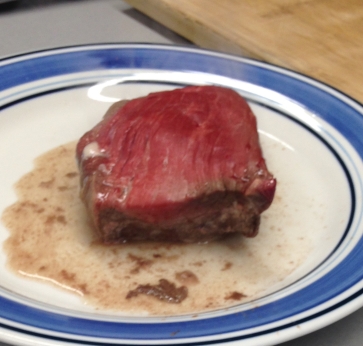










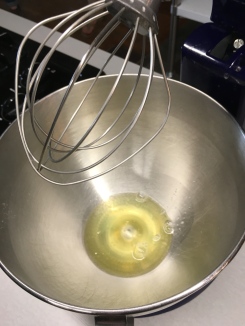


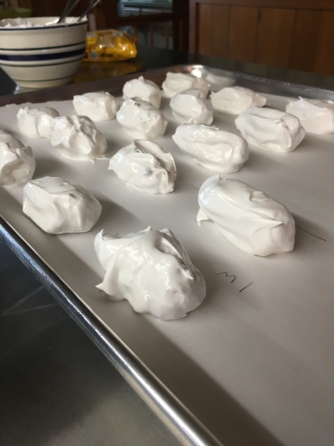

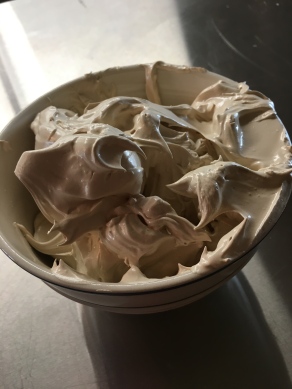



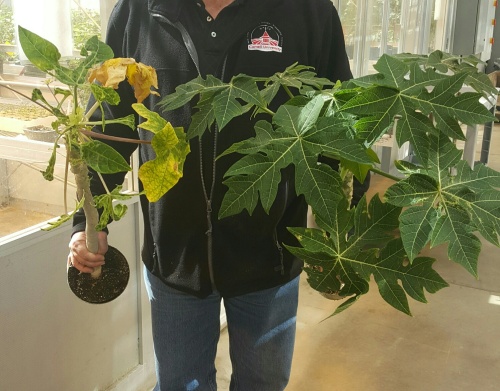















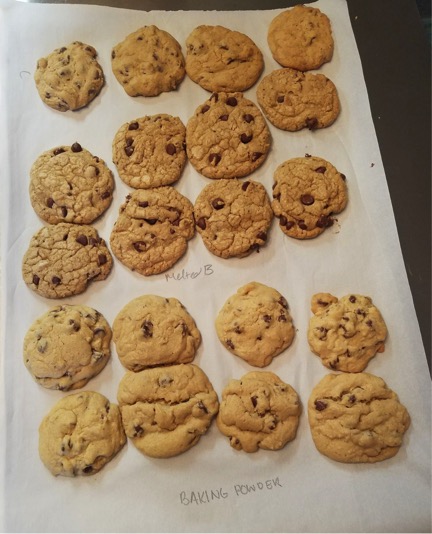










































 Now for the fun stuff! The heating of milk! I know it doesn’t sound like the most excited thing but don’t worry well get there. Heating milk is how someone makes cottage cheese. Cheese curds! The heating separates the whey protein and curds. The picture on the left shows the result for this reaction. Now obviously the first part of this is to pour milk into a pot and turn the heat on. Simple, right? Then you just wait ad drain at the end and you have cheese curds and whey! All my life I always thought that whey was a solid A lot of protein supplements advertise “Pure Whey Protein” and when you get the protein its solid. So, without asking questions I just assumed that it was solid. Sadly, I was mistaken. Don’t believe everything you see on the internet! Except for this blog! 100% facts.
Now for the fun stuff! The heating of milk! I know it doesn’t sound like the most excited thing but don’t worry well get there. Heating milk is how someone makes cottage cheese. Cheese curds! The heating separates the whey protein and curds. The picture on the left shows the result for this reaction. Now obviously the first part of this is to pour milk into a pot and turn the heat on. Simple, right? Then you just wait ad drain at the end and you have cheese curds and whey! All my life I always thought that whey was a solid A lot of protein supplements advertise “Pure Whey Protein” and when you get the protein its solid. So, without asking questions I just assumed that it was solid. Sadly, I was mistaken. Don’t believe everything you see on the internet! Except for this blog! 100% facts.




